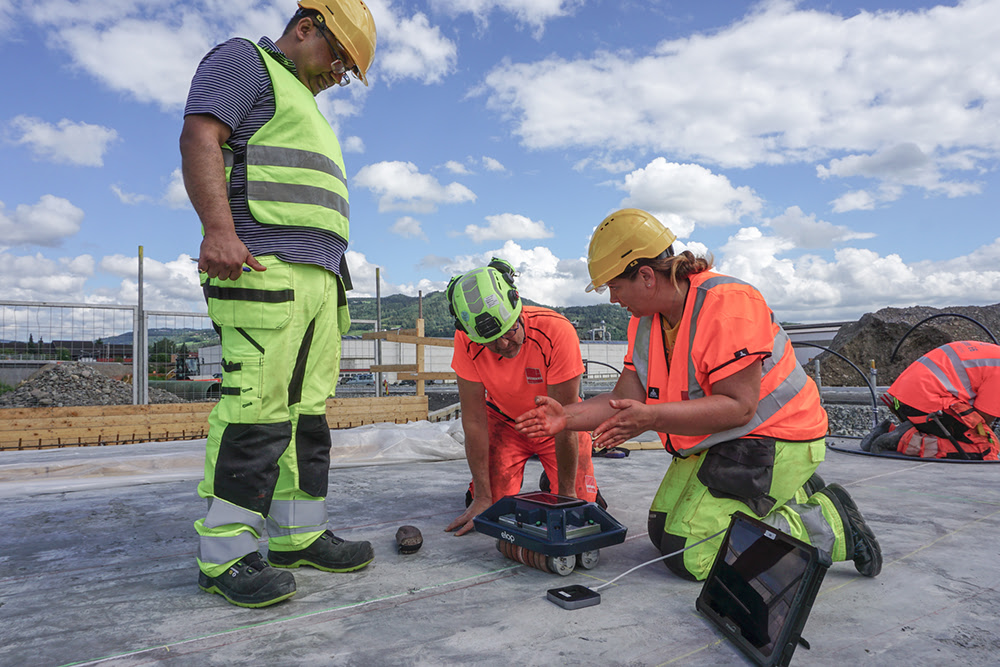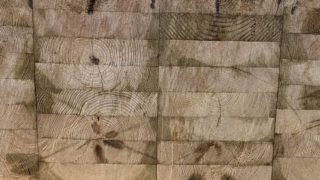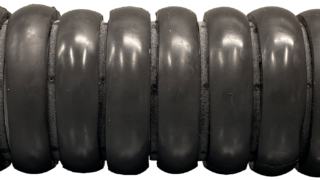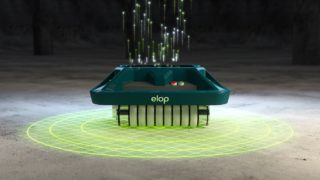Successful field test of the Elop Insight scanner with Veidekke in Brumunddal: Elop’s Non-Destructive Testing experts have just completed yet another successful field test of the Elop Insight scanner, proving that the scanner can find hidden defects and abnormalities below concrete surface. The test has been reviewing a bridge under construction in the city of Brumunddal approx. 100 km north of Oslo together with Norwegian construction company Veidekke.
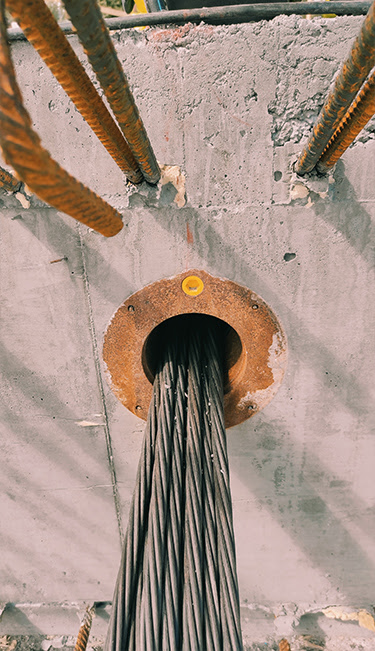
The aim of the field test has been to document – in a real-life setting – the scanner’s ability to detect hidden air pockets in tendon ducts, and not least to optimize workflow to further increase its speed and accuracy.
Post tension tendon ducts are commonly used in bridges. After stressing the wires, the tendon ducts are filled with grout. Elop’s inspection engineer Mats Holmqvist explains that for several reasons it can be difficult to fill them completely, such as improper filling, material mixing, blockage due to tendons etc. This can leave air pockets, allowing water to penetrate then leading to accelerated corrosion.
Ultrasound is particularly well suited to locate these voids. When an ultrasound signal hits air in a concrete sample, e.g. voids, delamination or cracks, it will reflect almost 100% of the signal back to the testing equipment.
Before and after
In collaboration with the Norwegian construction company Veidekke building the bridge, the inspection team have performed two series of scans: The first while the tendon ducts were empty, and the second after concrete had been injected into the ducts.
The new Brumunddal bridge is 6 metres wide, and the thickness of the bridge slab is 90 cm. The tendon ducts run at a depth of around 60 cm.
According to Mats Holmqvist the scanner performed as expected. Together with his colleagues Mats is now putting together the inspection report to be delivered to Veidekke soon, including a specification of the time and resources used to perform the inspection.
Speed matters
– This aspect is really important, says Mats.
– Compared to conventional ultrasound equipment, the Elop Insight scanner is much easier and faster to operate. Conventional ultrasound inspection methods require you to take a still image every 10 cm. You place the equipment, take a snapshot, and then move forward 10 cm and take another, and so on. For a 13 m tendon duct – like the ones in the Brumunddal bridge – that means 130 still images for each tendon duct. That takes a lot of time and includes added complexity.
– With the Elop Insight scanner we can do the scans at walking speed. The time factor is extremely important. You have to consider, that on top of paying the concrete inspectors for their time you have to close the bridge, set up scaffolds, hire skylifts etc. To keep expenses and inconvenience to a minimum you need to do the job and get off the bridge as quickly as possible. The Elop Insight scanner allows you to do just that.

– Furthermore, the scanner allows you to see a real time 3D image of the structure you’re inspecting. Other ultrasound devices produce 2D images, which you then have to run through a desktop computer to generate the 3D visualisation.
Optimizing workflow
Besides confirming the accuracy and efficiency of the ELOP Insight scanner, the Brumunddal field test is giving Mats Holmqvist and his colleagues input on how to optimize performance and workflow even further.
– We are testing how long it takes to cover a specific surface, and we are continuously making minor adjustments to the software to fine tune the workflow, both for the concrete inspector operating the scanner and for back-office personnel accessing the 3D images via a cloud portal and examining them on their desktop computer. Testing the equipment in the field gives you input that you won’t get from working in a lab.
– All this is valuable knowledge, as efficiency and speed are very important aspects. We can do the inspection much faster and more accurately, compared to conventional ultrasound technology. That means you can perform more inspections for less money, and that gives you a more precise and complete overview of the condition of the concrete structure you’re inspecting.
Hundreds of bridges need monitoring
According to Alf Egil Mathisen, Concrete Technologist at Veidekke, there is a huge need for health monitoring of bridges and other large concrete structures in Norway:
– There are hundreds of bridges that need to be analysed. Especially with bridges built in the 70s and 80s it can be difficult to assess their structural health, and for years I’ve been looking for inspection tools that can give an exact picture of what’s going on beyond the concrete surface.
There is no doubt the Elop Insight scanner is superior compared to other NDT devices, and we are collaborating with Elop to determine the potential of the scanner for our business.
Primarily Alf Egil Mathisen is interested in the usability of the scanner, including its handling and how long it takes to perform scans. Furthermore he wants to assess its capabilities and how to analyse scanner data.
– I’m looking forward to the inspection report, and I’ve agreed with Mats to accompany him on other assignments to learn more about the equipment, how to operate it at analyse its output. I think it has great potential, although there are some things that need to be developed further. But in my opinion Veidekke should act as a First Mover in this field and integrate the Elop Insight scanner in its toolbox for monitoring bridges and other large concrete structures.
Collaboration
The Brumunddal bridge project is one of many collaborations between Elop and various stakeholders in the construction and inspection community. The aim is not only to test the equipment but also to create showcases to inspire the industry to adopt the new technology.
Elop’s Chief Product Officer Erik Leung elaborates:
– I think it is fair to say that there is no dispute about what this machine can do. Now, as part of commercialising our technology, we are partnering with major players in the industry to showcase its potential, and many of these stakeholders are now realizing that a new technology is arriving to the market.
– But, as the inspection is largely government driven, the regulators need to rethink and redefine the procedures for inspection. We are adding a new device to the toolbox, which can do a much better job predicting structural failures than conventional ultrasound tools. When government regulators like the Norwegian agency for roads and bridges and others fully realize this, they will start looking into how to integrate our technology into inspection and maintenance requirements and procedures for large concrete infrastructures. And then the market potential will open up dramatically.
Ultrasound gaining traction
According to Eric Leung, this is already happening, slowly but surely. The market is driven by some early movers than can deliver concrete inspection insight using the Elop Insight such as Invator AB. They are well established in Sweden and plan to move into the Norwegian market soon. Larger inspection services companies like Aker Solutions, Veidekke and HAB are evaluating and planning for a venture into concrete inspections fuelled by new technology and possibilities such as the Elop Insight Scanner, Elop is also gaining traction across the EU with companies from Germany, France, Italy, and Spain showing their interest, both from service providers looking for new business opportunities and asset owners in need of structural health insights into their assets.
– The ball is rolling, and this will get huge. And the Elop Insight scanner is just the beginning. It’s an enabler to get access to monitoring data. This data can then be combined with other data sources, enabling analysis to be used for decision support and automations. Next phase we’ll be a player in developing the overall monitoring platform for large concrete assets, with the ability to predict structural failures and to enhance the lifetime of these structures. To sum it up – we’re on a very exciting journey.

